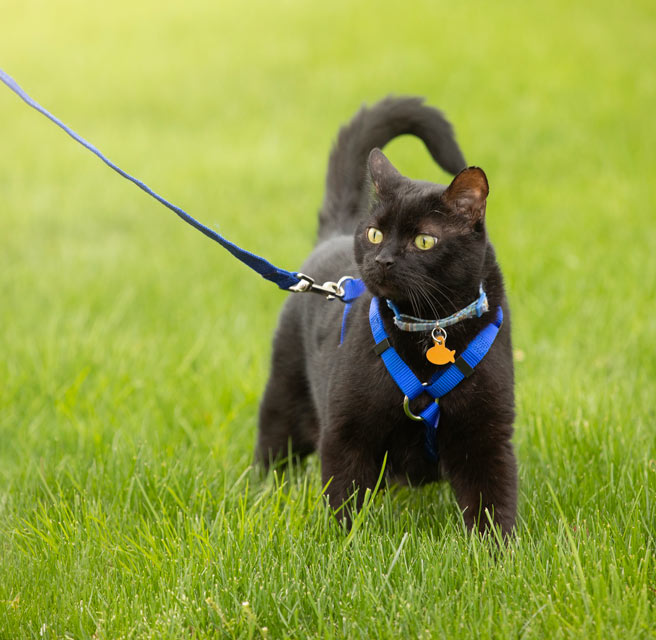Why Won't My Cat Walk on a Leash?

It's a common scenario—a loving cat owner notices their feline friend spending a lot of time looking longingly out windows, watching the birds and chipmunks play, and decides to get a leash and take the kitty out. But, surprisingly, the cat often wants nothing to do with it, rolling on her back and refusing to move or doing her best to dart off behind the nearest bush, looking terrified.
Why do some cats refuse to go for leash walks outside?
Cats Can Balk at New Experiences
Cats have a well-known reputation for not wanting to do things that aren't their idea. But what that actually means is they have an innate fear of the unknown. Their wild ancestors would have been well-served by such a trait. It may have kept them out of danger to ease into new situations, being carefully observant rather than rushing in headlong.
When you suddenly show up with a leash which the kitty has never experienced before, slap it on, and take the kitty immediately outside, she may experience intense fear and a desire to get away or freeze.
Can I Get a Reluctant Cat to Leash Walk?
Whenever you introduce something new to your cat, do so slowly and gently. The more you allow your cat to investigate, think about, and otherwise get used to something, the more likely she is to come around and go along with your idea willingly eventually.
Follow this suggested checklist to help your cat adjust:
- Get a good, secure harness and leash. Don't use a collar because that can slip off. Also, make sure the harness fits snugly, with you being able to get a finger between the body and the harness.
- Let your cat investigate the harness and leash. Put the harness and leash on the floor near your cat. Play with her nearby with a favorite toy and give her treats and praise for being calm and happy.
-
After a while, put on the harness. Make sure you practice first, so you know how to do it when the time comes—they can be tricky. If you're fumbling around too much, it can make your kitty more nervous. Once the harness is on, give your cat praise and treats. Take it off again after a few minutes.
- Keep practicing, leaving the harness on longer each time. If your kitty gets too upset, slow down and go back to a shorter time period.
- Once your kitty is used to the harness, attach the leash. Let your kitty drag the leash around inside a bit, under direct supervision only, and give her lots of praise.
- Once the cat accepts the harness and leash, practice leading her. Pick up the leash, holding it with slack first, and get your cat used to you holding it. Don't lead her anywhere right away. Give her praise and treats.
- Eventually, begin leading her by the leash. Lead gently, always giving lots of praise and treats.
- Once your kitty is relaxed with being led by the leash, venture outside. Keep your outside jaunts short at first, and keep giving lots of praise and treats.
Some cats will never allow leash walking, but most cats, if you're patient and positive, can be trained to go outside on a leash and have a nice time. Some cats will move through the above steps quickly, while others will take a long time to move through them. Go at your kitty's pace for the best results.
Before you take your kitty outside, make sure she is up to date on her vaccines, current on parasite prevention, has a microchip, and is wearing current identification tags. All that will help keep her safe if she should be exposed to something outside or somehow get away from you.

